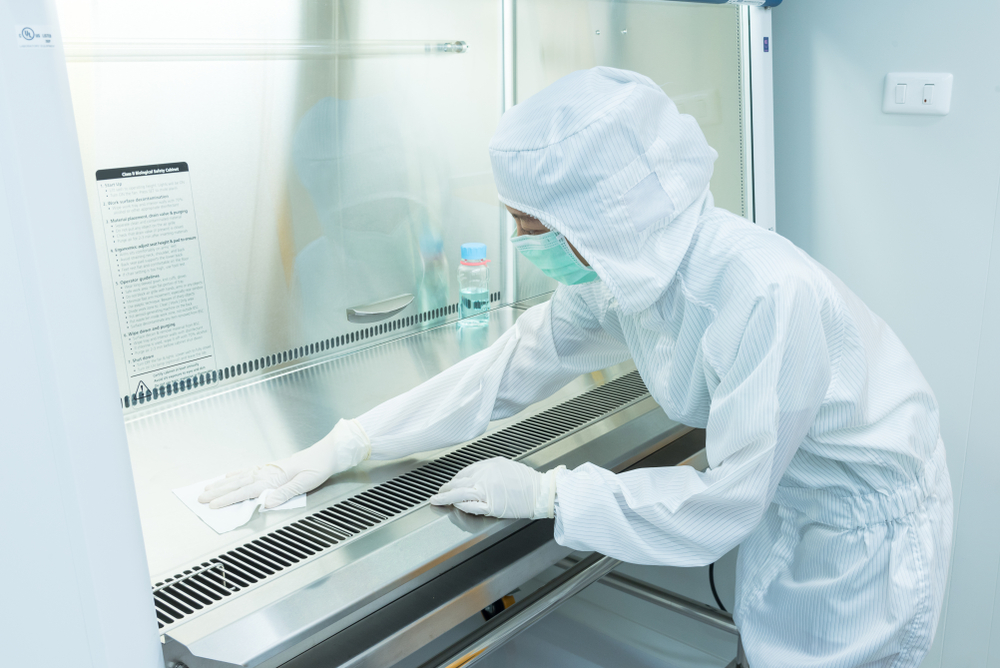SEPS of New York offers scientific equipment decontamination services, which includes Biosafety Cabinets, Incubators and Centrifuges. Additionally, we decontaminate entire laboratory rooms.
Regardless of the size and scope of your project, you can rely on SEPS to insure the safe, effective, and timely neutralization of contaminants in you facility.
Laboratory Decontamination Methods
We utilize only NSF/NIH approved methods, which includes hydrogen peroxide and chlorine dioxide gas decontamination.
Contact us today, and we will help you determine which decontamination method is best suited to your lab.
1. Chlorine Dioxide Decontamination
Chlorine dioxide has become the decontamination method of choice by most laboratories in the US.
Validated by NSF, this method is designed to decontaminate biological safety cabinets. Additionally, it is used as an all purpose agent neutralizer.
Chlorine Dioxide is a popular method, due to its efficiency and short downtime.
2. Hydrogen Peroxide Decontamination
Laboratories handle a vast array of materials, chemicals, and biological agents that can pose risks to personnel, the environment, and research outcomes. Contaminated laboratory equipment can compromise experiments, research results, and even the health and safety of lab staff. It is, therefore, crucial to implement effective decontamination procedures.
Hydrogen peroxide decontamination is a proven and widely accepted method for neutralizing a broad spectrum of contaminants. This process offers numerous advantages, making it an ideal choice for laboratory decontamination.
Equipment Decontamination Checklist:

- Biosafety Cabinets
- Fume Hoods
- Incubators
- Ovens
- Centrifuges
- Water Baths
- Refrigerators & Freezers
- Balances & Scales
- Chemical Storage Cabinets
- Colorimeters
- Desiccators
- …and all other laboratory equipment